Sushi or ramen bowls—Japanese food has moved out of fancy-shmancy restaurants to your gully ka kinara. Get ready to get in line
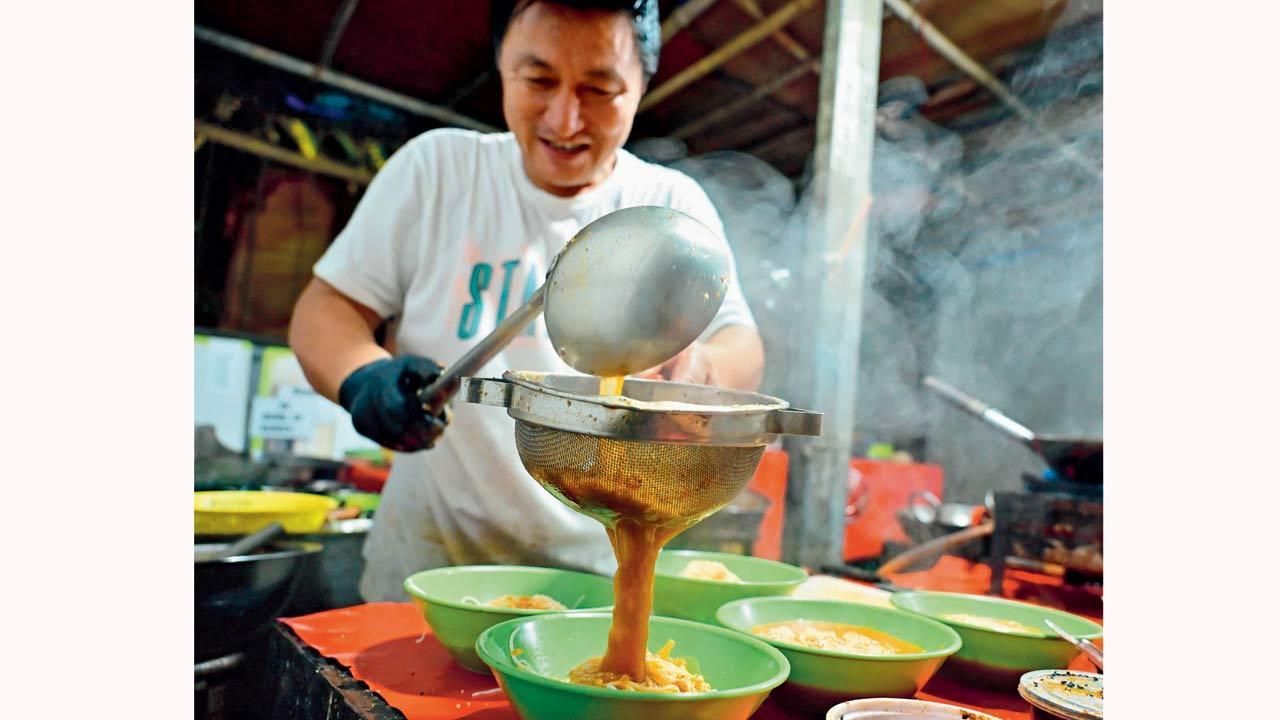
Gagan Rai runs the viral Ramen Bowl at Versova, and uses Hakka not ramen noodles to keep the costs befitting a street-side food stall. Pic/Shadab Khan
Mumbai's first big encounter with Japanese cuisine came in 2001 when Wasabi by Morimoto opened at Apollo Bunder’s Taj Mahal Palace Hotel. Now, the cuisine is spilling onto the city’s streets.
Last week, Instagram made a small cart in Versova called Ramen Bowl, famous. Since then, Gagan Rai and his partner, who prefers to call himself by his first name Micky, have been enjoying the fruits of virality. They open shop at 7 pm and run out of supplies in 1.5 hours.
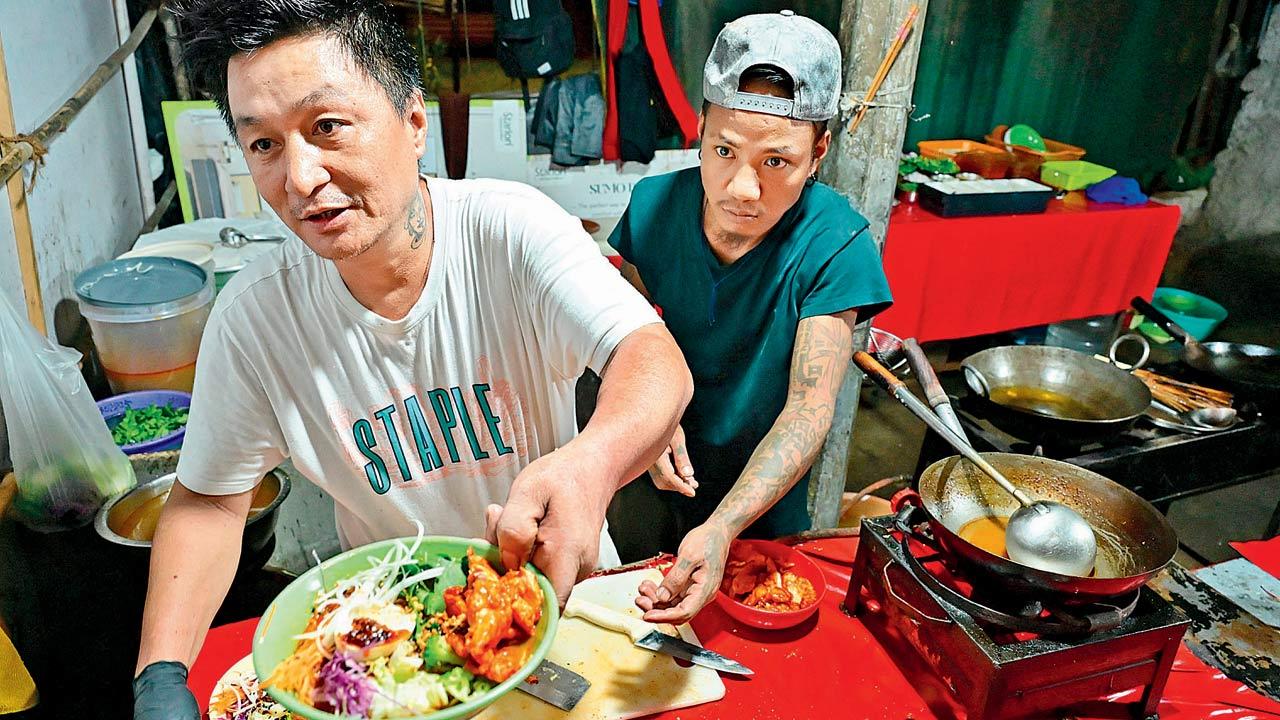 Gagan Rai and Micky assemble fresh ramen bowls every evening in Versova and run out in 1.5 hours
Gagan Rai and Micky assemble fresh ramen bowls every evening in Versova and run out in 1.5 hours
So, when and why did a Chinese street food stall start serving noddle-broth ramen? Rai says he heard about the instant ramen craze and how vendors were cooking and serving a variety of flavours of instant Korean noodles on the streets. He thought, why not cook a Japanese-style ramen bowl from scratch and serve it fresh? In May this year, he began serving hot bowls of the Japanese noodle dish, that some say is in fact of Chinese origin and brought to Japan in the late 19th century by Chinese immigrants. Rai, however, replaced the traditional ramen noodles with hakka noodles to keep the price low.
Rai hails from Darjeeling and was a sous chef at Wok Express [now shuttered] where he learnt how to cook Chinese. In 2018, he quit and set up a stall of street-style Chinese at Mira Road. Later, he moved to Versova but the pandemic followed. For quite some time, Rai was out of work. “I simply want to serve fresh and hygienic food. Instead of instant noodles, they can now eat fresh, hot ramen’’, he says.
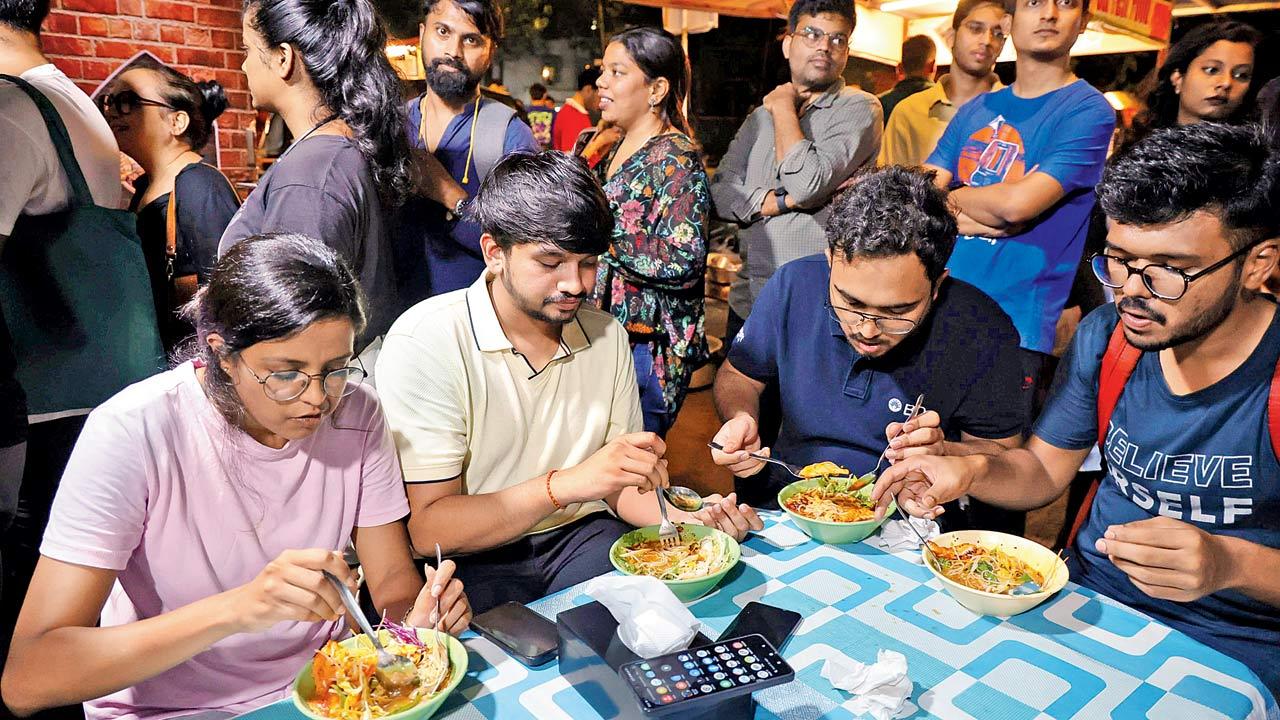 Patrons queue up for ramen bowl in Versova out of curiosity and because the stall has gained virality on social media. Pics/Shadab Khan
Patrons queue up for ramen bowl in Versova out of curiosity and because the stall has gained virality on social media. Pics/Shadab Khan
Rai’s popularity in the neighbourhood has grown thanks to word of mouth. A man of few words, he credits his virality to his customers, too. “They helped me”, he tells mid-day.
In Kandivali’s Mahavir Nagar, this delicious Japanese inquisition began a little earlier. In November 2023, Varun Mehta, founder of VD’s 91 Sushi House set up his stall. Mehta was already serving shawarma, subs, and pasta out of carts in the locality. He opened a separate stall just for sushi after he developed a taste for it.
A few shops away is the five-month-old JusTaberu. Co-founders Krunal Parmar and Meet Sarvaiya decided to bring sushi and ramen to the streets when they noticed that the khau gullies were missing Asian food. As our street stalls begin to roll sushi and simmer broths for ramen, they are making Japan’s food more affordable and easier for anyone to access.
 KOKO launched in 2016 at a time when there were very few restaurants in the premium casual space serving sushi
KOKO launched in 2016 at a time when there were very few restaurants in the premium casual space serving sushi
But our ties with Japanese culture are older. In 1993 Ramayana: The Legend of Prince Rama, an anime version of the epic was co-produced by India and Japan. It was dubbed in Hindi and brought to our television screens, and kids across India would wait for every episode. Later, Shinchan, Doraemon, and Pokemon became big hits and were Indianised for region-specific audiences. Indians are now consuming more anime than ever before, not just on OTT platforms, but also on big screens. When the anime Demon Slayer released its first theatrical film in 2020, Demon Slayer: Mugen Train, a Change.org petition received over 47,000 signatures. This motivated PVR Cinemas to bring the film to the big screen by August 2021.
Japan’s culture, though, first came to India through trade and Buddhism. In 1907, a Japanese cemetery called Nipponjin Bochi was built in Worli, where the graves of Japanese businessmen and their geishas still stand. It’s perhaps the only one of its kind in India. In the same neighbourhood, right across Poddar Hospital, you will find Nipponzan Myohoji, a Japanese Buddhist temple built in 1956. A 13th-century Japanese monk Maha Bodhisattva Nicherin made a prophecy stating that humanity’s ultimate salvation lay in India and that Buddhism would spread to the rest of the world from here.
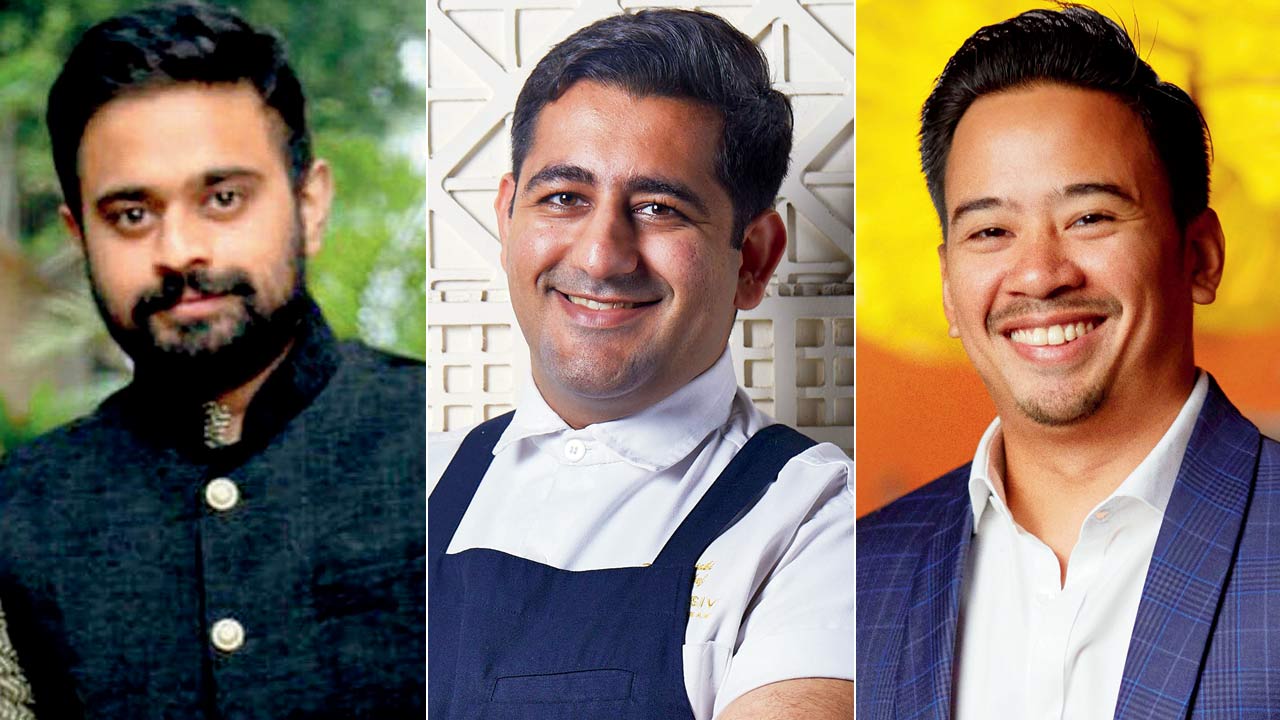 Varun Mehta, Rahul Punjabi and Keenan Tham
Varun Mehta, Rahul Punjabi and Keenan Tham
Eventually, the time for Japan’s culinary traditions to seep into India came in the 2000s. And at first, quite like Chinese food, it came to posh hotels. “Wasabi was and still is the gold standard for the cuisine in the city. When it opened, it was for the uber-rich. Sometime in the 2010s, Kofuku in Bandra and San:Qi [now shuttered] at the Four Season Hotel opened. But it was still quite expensive to eat Japanese. By around 2014, pan-Asian restaurants were becoming popular. People were asking for Thai curries and satay, and Khowsuey was having a moment,” says Chef Mitesh Rangras, head chef at Tango Tamari, Juhu’s Nikkei Japanese restaurant. It was only after pan-Asian restaurants became popular that dedicated Japanese restaurants began to open. Keenan Tham, managing director and co-founder of Pebble Street Hospitality says, “We launched KOKO in 2016. At the time, there were very few products in the premium casual space serving sushi; most in the 5-star hotels. We decided to take the plunge and add Japanese to our menu. The response was fantastic and over the years, the supply chain has improved, allowing us to make more ingredients and dishes available on our menu.”
Now that both millennials and GenZ are fans of Japanese anime and Korean pop songs, they are seeking cultures through food and travel. According to the Japan National Tourism Organisation, in March 2024, Japan saw over three million foreign visitors in a single month, with record-breaking tourists from India, and the US, among other countries. “Food is a big part of Japanese culture. If you watch any anime, food plays a big role. I have been influenced by it since I was a kid,” says Chef Lakhan Jethani, partner and head chef at Mizu Izakaya, a casual Japanese restaurant in Bandra. He adds that as more Indians travel to Japan, “they seek a small part of Japan once they return. Then there is part of the population that’s aspirational about travelling to Japan. That’s where this boom [of patrons] took place.”
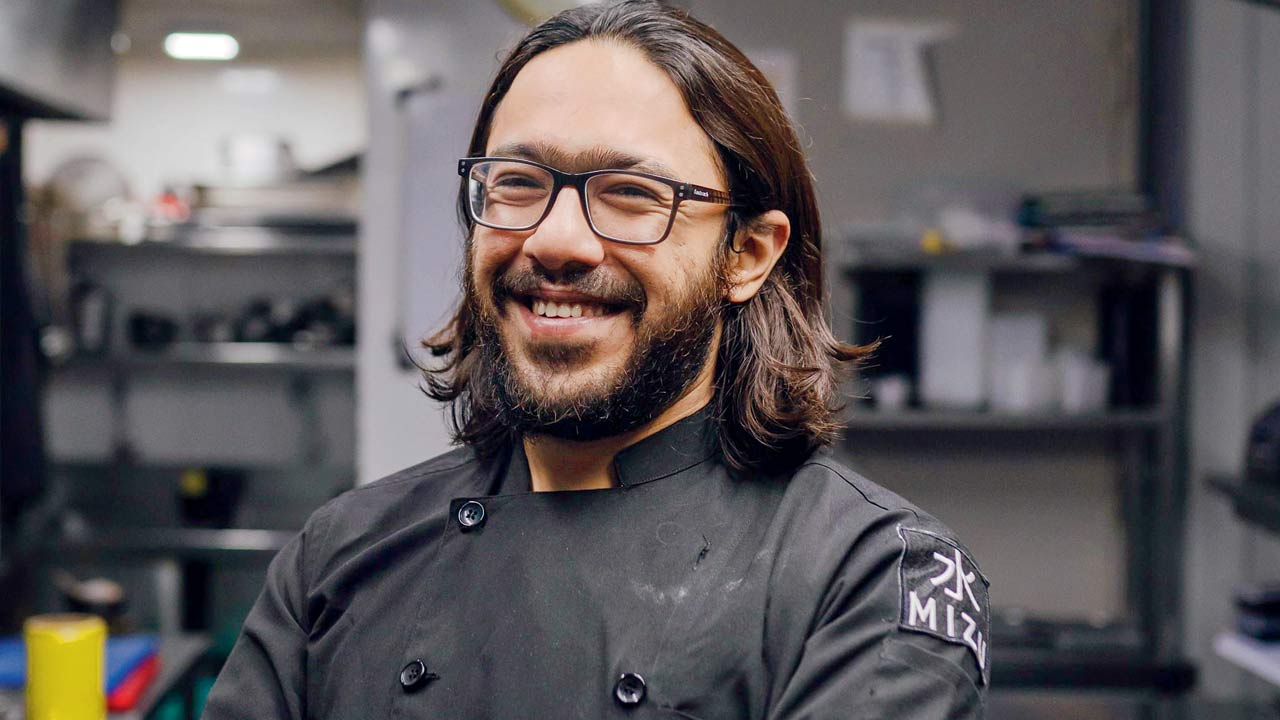 Chef Lakhan Jethani
Chef Lakhan Jethani
That’s why this transition of Japanese food from gourmet to gully is only natural, says Chef Rangras. “Chinese food became big thanks to restaurants like Kemps Corner’s China Garden. Eventually, more region-specific and technique-driven Chinese restaurants were launched. Parallelly, the cuisine grew on India’s streets and we heavily Indianised it. Same with Japanese. It’s the logical progression for any cuisine.”
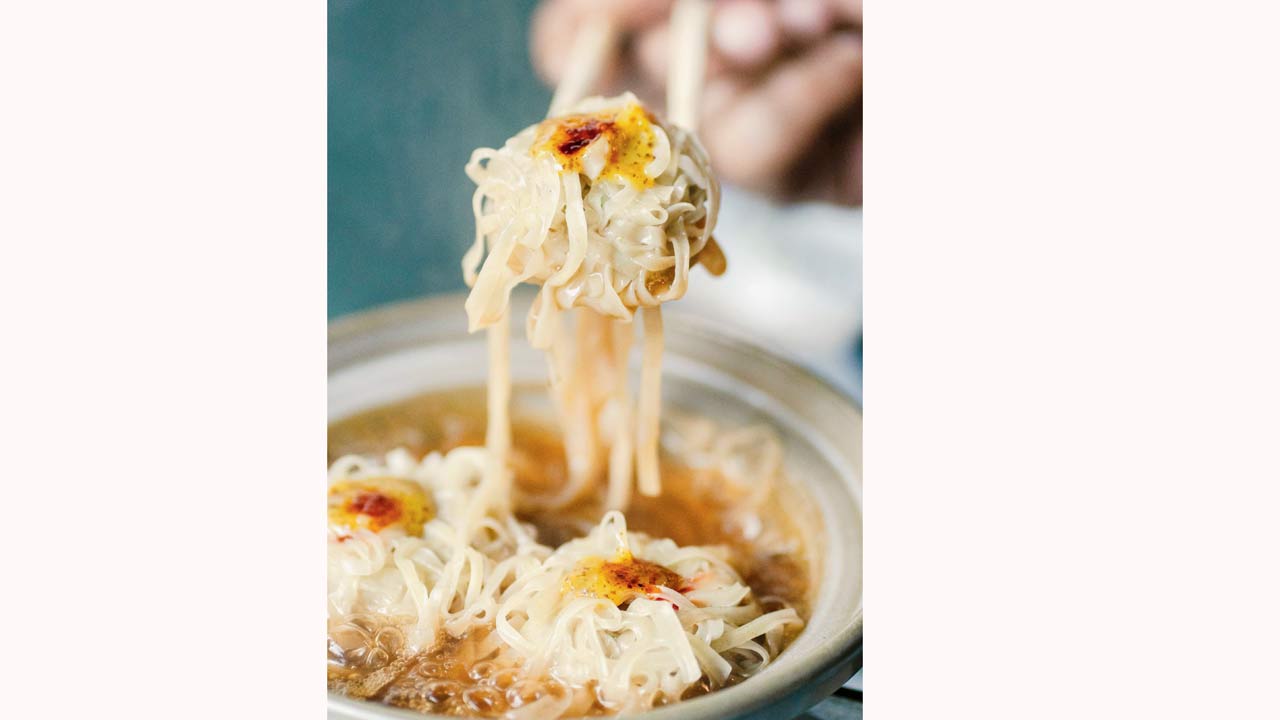 Most vegetables and grains used at Mizu are locally sourced, but ingredients crucial to Japanese cuisine still have to be imported making it capital intensive
Most vegetables and grains used at Mizu are locally sourced, but ingredients crucial to Japanese cuisine still have to be imported making it capital intensive
It was this thought that Mehta held on to too. “I love Japanese food and have tried it at many restaurants. But it’s not affordable to eat regularly,” he says. Mehta first tried making sushi at home, as he’s admittedly a bit of a chef and has tried to enter competitions including MasterChef India. He wanted to bring sushi with high-quality ingredients to the streets for the middle class, who would probably never visit a Japanese restaurant. “My suppliers are the same as any of these bigger restaurants. We serve sushi with wasabi, fermented pink ginger, and soy sauce. And, we make sushi with blue pea rice,” he says. Mehta adds that it took him a couple of tries to get it right, but he was most surprised to find that one of his staff, a young man from Uttar Pradesh, was aware of sushi and even had tips on how tight to roll it during trials. Mehta says that selling sushi has been quite successful for him. And that most customers who are unaware of what the dish is, order it out of curiosity.
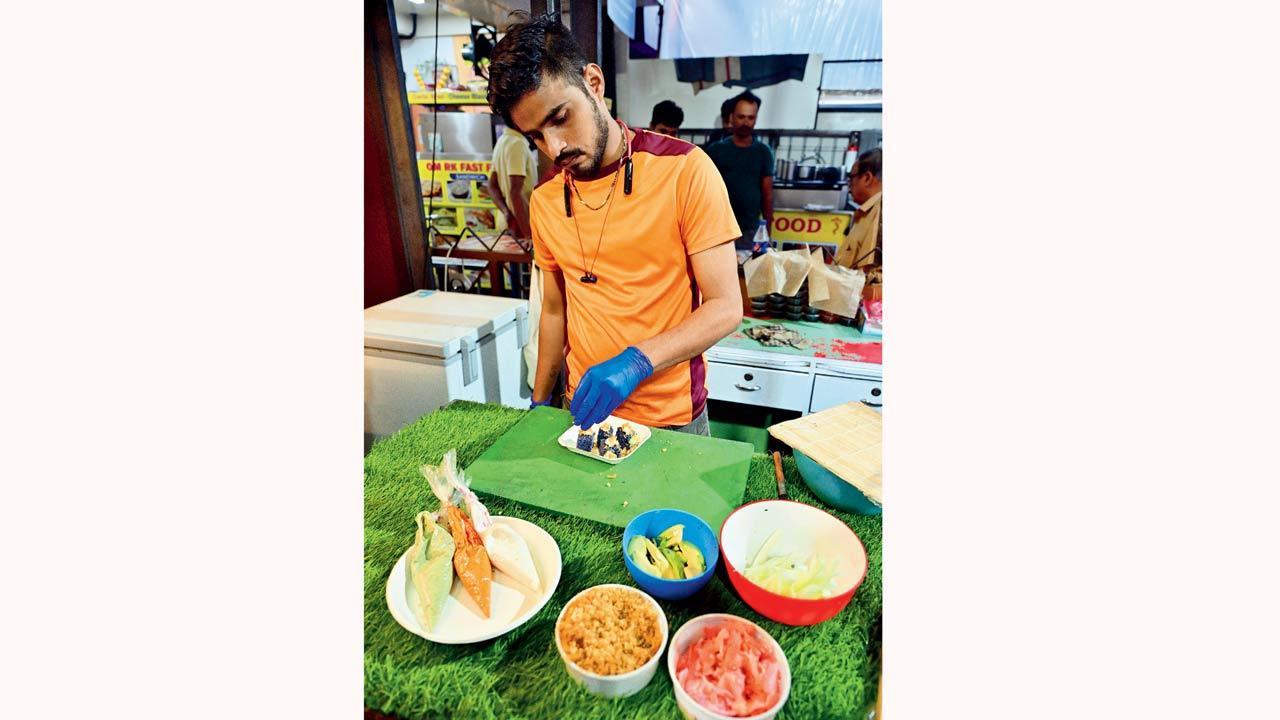 VD’s 91 Sushi House was one of the first to start serving sushi at the Mahavir Nagar khau galli and has found success among curious eaters
VD’s 91 Sushi House was one of the first to start serving sushi at the Mahavir Nagar khau galli and has found success among curious eaters
On the other hand, Parmar says that educating some customers has been a challenge. “My audience is anyone aged 18 to 50. Of course, the younger generations know what sushi and ramen are but we have to educate the older audience. They are clueless about the seaweed wrapper and think it’s non-vegetarian because it smells like the sea,” he says. To make the sushi more adaptable to the Indian palate, Parmar serves a California roll with paneer (R300). The mayo has been Indianised, and primarily added to mask the smell of seaweed. For the ramen broth, JusTaberu uses miso and vegetables that are common locally too. But he also adds paneer as the protein source as he only serves vegetarian and Jain options. It took six months of trials for Parmar and his co-founder Sarvaiya, who is a trained chef, to finalise the menu and to ensure that costs were low.
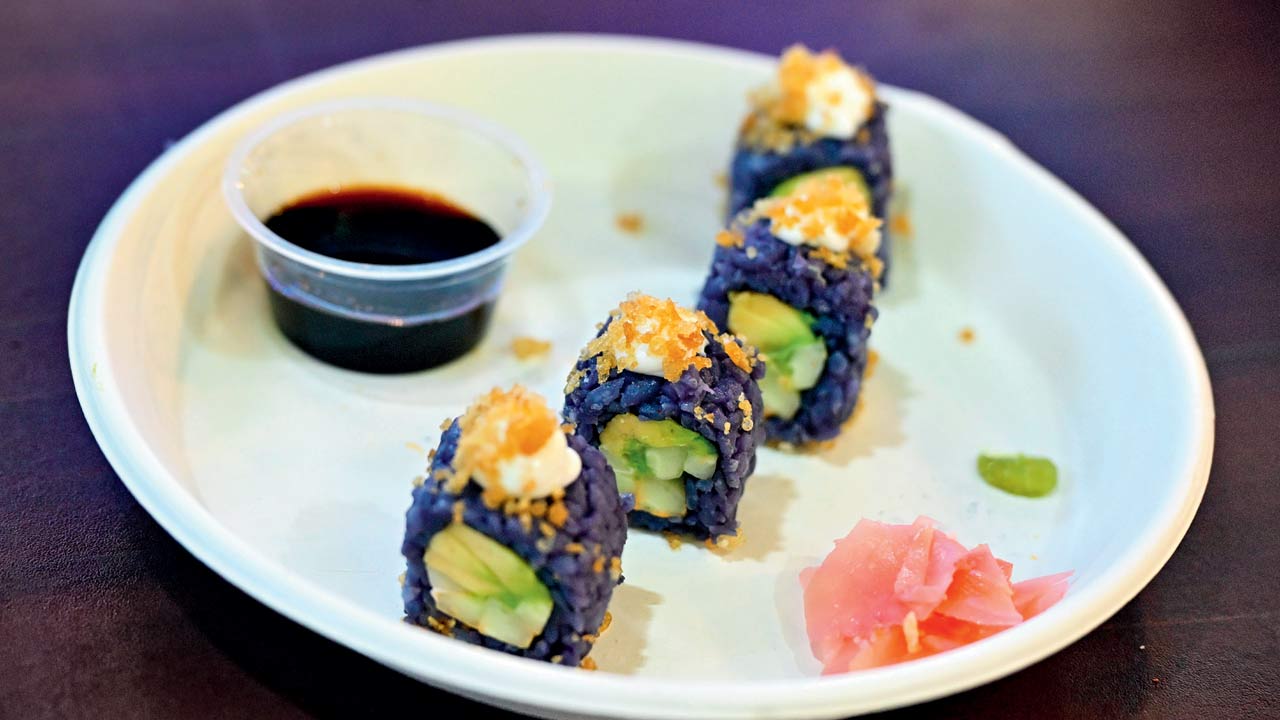 The stall offers sushi rolled with blue pea rice, mayo, and tempura crumbs giving street food eaters all the flavours and textures they usually crave
The stall offers sushi rolled with blue pea rice, mayo, and tempura crumbs giving street food eaters all the flavours and textures they usually crave
Rai too says that a lot of people have only heard of ramen but don’t know what it tastes like. As they are curious to try, they find themselves lining up for some at his stall. Apart from educating patrons about the broth, he says that every bowl’s assembly too takes up time and causes long queues. But he has always been optimistic about his ramen bowls finding success on the streets. “Japan sells ramen on the streets, so why can’t we?”
 Krunal Parmar and Meet Sarvaiya
Krunal Parmar and Meet Sarvaiya
It is this ethos of Japanese food that has been missing in India, says Chef Jethani. “When the Japanese want to celebrate or have an occasion, they go to a sushi master. Yakitori, gyoza, and ramen are not fine-dine food for the Japanese. On most days in Japan, people eat this on the streets or at izakayas [informal Japanese bars]. So, I think it’s very cool that we are now seeing ramen carts on our streets too,” he says. Chef Jethani feels that for decades, Japanese cuisine has only meant fine dining in India. The shift to casual has been gradual and is still underway. But the other reason why the cuisine has always been associated as “expensive” is because it is. “The current trade regulations are such that we have to pay high import duties. If I serve tuna sushi, I have to use high-grade tuna from Japan, which costs a lot to bring in. I cannot use local tuna; it simply won’t work. At Mizu, 95 per cent of our vegetables and grains are local. But some ingredients that are crucial to the cuisine, we have to import.”
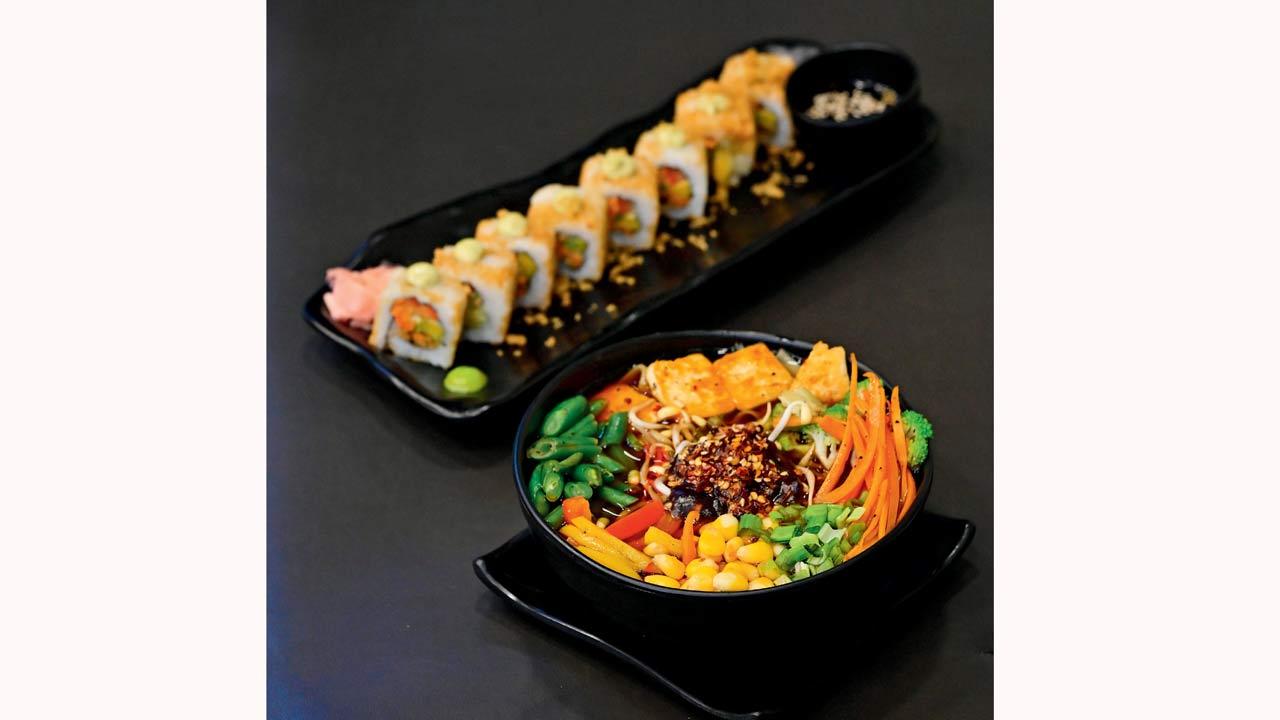 JusTaberu in Kandivali offers vegetarian and Jain sushi and ramen and uses ingredients like paneer, asparagus, avocado, and more
JusTaberu in Kandivali offers vegetarian and Jain sushi and ramen and uses ingredients like paneer, asparagus, avocado, and more
With every chef we spoke to admitting that authenticity in cuisine is a farce, we are now seeing many of them explore their creativity. A lot of it comes in the form of how ingredients are used. Head chef at Akina, Rahul Punjabi says, “Authenticity in food comes in through the techniques and the traditions of cooking.” Speaking on how Indian street vendors are Indianising Japanese cuisine, he says, “In Japan, when you eat Italian or Indian food, they use miso and dashi in the sauces and gravies. Now, we are taking Indian flavours and adapting. It’s the natural progression of a cuisine when it enters a country that’s not its own.” He adds that at Akina too, they don’t use 100 per cent Japanese ingredients. “We are developing a paneer miso, and already use a spicy shoyu that is made with Kashmiri chillies for that extra kick.”
 Ramen bowls at JusTaberu feature paneer and locally common ingredients. The stall owners say this is done to Indianise the dishes for their patrons as well as to keep costs low
Ramen bowls at JusTaberu feature paneer and locally common ingredients. The stall owners say this is done to Indianise the dishes for their patrons as well as to keep costs low
But the streets are already ahead. Stalls are using ingredients you once only saw at restaurants. Sushi is rolled with ingredients like avocado and asparagus. It’s topped with tempura crumbs and comes with gari (sweet pink pickled ginger). Chicken is breaded, fried, and served in ramen (just like katsu curry). And, the familiarity of soy sauce gives unaware patrons a nudge to not be afraid. Chef Rangras who has tried the sushi stalls in Kandivali and the ramen in Versova, says, “It has all the flavours of sushi and the textures you would want in street food: vinegary sushi rice, seaweed wrapper, crispy tempura crumbs, and sauces. You get soft, creamy, spicy, crispy! As for the ramen bowl in Versova, he crumbs the chicken. Of course, it’s not panko, and he uses hakka noodles, but at Rs 190, who’s complaining?”
 Chef Mitesh Rangras, Nikkei Japanese restaurant Tango Tamari
Chef Mitesh Rangras, Nikkei Japanese restaurant Tango Tamari
 Subscribe today by clicking the link and stay updated with the latest news!" Click here!
Subscribe today by clicking the link and stay updated with the latest news!" Click here!










